|
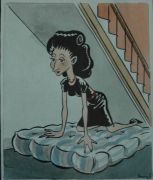
'Feliz Ano Nuevo'
Line & wash on cartridge 1941 (ae)

Publicity for 'The Continental' restaurant, Liverpool
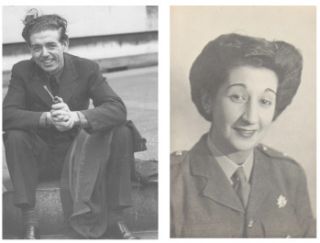
Mario Hubert Armengol 1942 (ae) Rolindez Madariaga 1940 (ae)
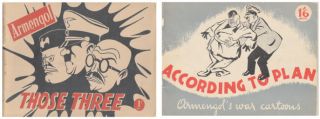
Two Armengol cartoon booklets published during WW11; highly
unusual at a time of severe paper rationing (ae)
Click here for more examples of Armengol cartoons
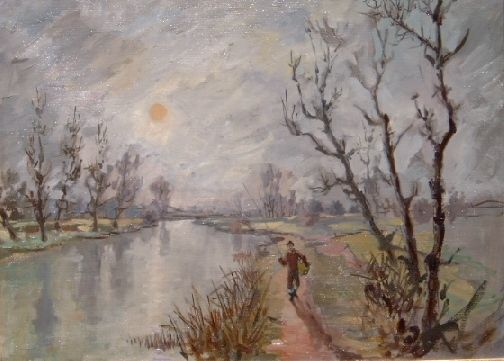
Laneham Fisheman, oil on canvas 1942 (ae)
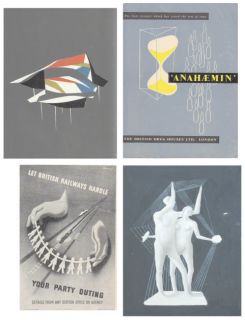
Some of Armengol's early post-war design commissions
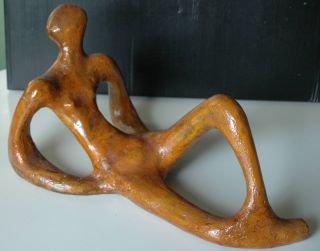
Reclining Figure, Plaster 1950s
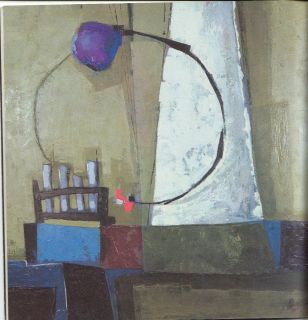
The Breaking of the Atom, Print of original Oil for
Polymer Industries, 1950s (ae)
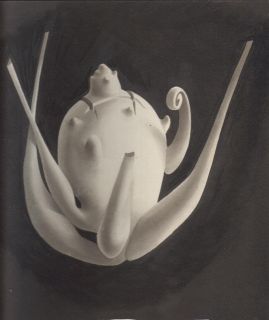
The Morphorgenesis of Plants for Festival of Britain !951 (ae) |
1942 Wartime cartoons published
'Those Three' (Hitler, Mussolini and Emperor Tojo) a collection of Armengol cartoons was published with a foreword written by Catalan historian and founder of the Anglo-Catalan Society, Dr Josep Maria Batista I Roca, who had met Armengol as a boy when lecturing in Terrassa. Wartime publishing of this kind was highly unusual because of paper and other commodity shortages; it helped to develop his reputation.
1943 Armengol cartoons and fine Art
A second political cartoon collection titled
'According to Plan' was published.
Armengol was commissioned to illustrate a children's book, 'Spanish Fairy Stories' translated by the American poet and novelist, Gamel Woolsey.
He moved from Nottinghamshire back to Hampstead, and had two paintings included in an exhibition of Western Art at The French Institute, London.
Other living artists also exhibiting included John Piper, Stanley Spencer, Paul Nash, Walter Sickert, Augustus John and fellow Iberian, Pablo Picasso.
Armengol also had his first political cartoons reproduced in several British publications, including 'Tribune' 5th November edition.
1944 Britain becomes home
More Armengol political cartoons were published in British national newspapers including the Daily Mail and DailyTelegraph, and several US newspapers including Chicago Sun and Boston Globe.
Armengol met Sylvia Lawrence, a married Czech refugee working at MOI as a translator. They lived together, first as lovers, then, following a mutually agreed abortion, as increasingly distant housemates, for 50 years. Rolindez moved to London after leaving the Army only to find Armengol living with another woman.
1945 Last days of World War 11
Armengol moved out of London again and was billeted in Topsham, Devon, producing cartoons for the Overseas Division of the Ministry of Information.
His employment finishes on 16th May, eight days after VE (Victory in Europe) Day.
He returned to London and was offered a job on a Fleet Street newspaper as a political cartoonist, but turned it down. Instead, he worked for the Central Office of Information, (the MOI's successor), as a graphic designer and illustrator.
1945-51 Post-war government and
industrial commissions
Armengol worked for the COI, designing murals and producing advertisements for a number of high profile companies and for government departmental publications. His commercial commissions included work for Hammerton Beers, British Drug Houses Laboratory Chemicals and more.
Rolindez, in sheer frustration, married the wrong man. Armengol was, however, a loving and constant friend and regular visitor.
Tensions rose between Rolindez and Sylvia, the Czech refugee with whom Armengol still shared a house in a relationship which had compromised his options. He had already abandoned one woman, his wife, could he do the same again?
He produced illustrations for the Ministry of Food magazine Food and Nutrition (1949)
Armengol became a naturalised British citizen and vowed he would never return to Spain whilst Franco lived.
1951 An international career develops
Armengol produced designs for the Festival of Britain, a post-war celebration of the country's new future. These included plastic sculptures in transparent Perspex. This new material - Perspex - was produced by ICI (Imperial chemical Industries). Armengol was one of the first artists to work with it creatively.
His early innovations resulted in a 20-year design relationship with one of Britain's most famous international companies, during which he won many awards.
His name, work and photographs were published across the world, and his life and whereabouts were finally revealed to his family, still based in Mexico and Terrassa.
His father sends him a photograph of his young son Benet, with a cold message 'This is what you left behind'
Mario and his family were not reconciled. He never saw his parents or his wife again.
Armengol's career went from strength to strength. He became wealthy. He bought a large house in Hertfordshire and creates his own studio, and a design company with a technical draughtsman, Bill Clarke.
He also began to paint in oils again and experiment with sculpture.
Rolindez, his soulmate, and her husband Terry has a child, Anita Lindah (1949).
Armengol visited the family constantly, sometimes two or three times a week. He becomes a father-figure to Rolindez's daughter. Her blood father was a distant, troubled man.
Armengol and Rolindez were both locked in unhappy relationships from which they could not honourably discharge themselves. She was his muse - evident in much of his work.
|